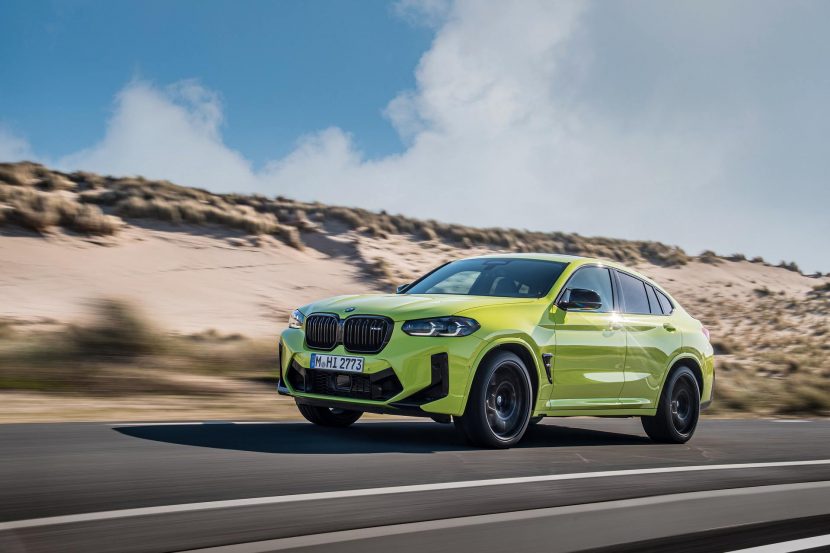As our readers may be aware, BMW is making a significant push towards electric vehicles with the launch of its EV-only platform, “Neue Klasse,” later this year. The architecture is expected to underpin at least eight vehicles by 2028, including the iX3 (NA5) and the iX4 (NA7) SUVs.
Interestingly, while the internal combustion engine (ICE) X3 will remain in production, the ICE X4 will be discontinued. The coupe-SUV occupies a niche market, and BMW already caters to it with the X2 and the X6. In fact, the X2’s updates in 2023 elevated its positioning and pricing, cannibalizing the X4.
No doubt, enthusiasts will argue that the X2 is not a direct replacement for the X4/X4 M because the former is based on a front-wheel-drive platform. However, the X2 M35i still has more-than-adequate performance for daily driving, boasting an output of 312 horsepower and a 0 to 60 miles per hour time of just 5.2 seconds. It also gets improved technology and luxury.
As yet, the X4 M, at least, still retains its unique allure and charm.
Performance—comparable to the M4?
Indeed, the X4 M features the same S58 inline-six twin-turbo engine that was named to Ward’s 10 Best Engines list for 2023. This powertrain is also found in the M2, the M3/M4, and the X3 M.
To that end, the standard X4 M’s S58 produces 473 horsepower and 457 pound-feet of torque, facilitating a 0 to 60 mph sprint in 3.9 seconds. Meanwhile, the X4 M Competition’s S58 generates 503 horsepower and 479 pound-feet of torque, with a 0 to 60 mph time of 3.7 seconds.
Notably, these figures are comparable to the M4’s, where the Competition Coupe delivers 503 horsepower and accelerates to 60 mph in 3.8 seconds. While the M4 undoubtedly offers significantly superior handling, the X4 M is also quite agile and dynamic, thanks to its standard all-wheel drive, sports differential, adaptive suspension, and high-performance brakes.
Stand-out Design, but Inferior Tech?
Being a coupe-SUV, the X4 M has a commanding road presence, further accentuated by its aerodynamic kit, 21-inch wheels, quad tailpipes, and bold paint options such as Sao Paulo Yellow and Toronto Red Metallic ($650 option). In our opinion, it has a noticeably better visual appeal than the X3 M50, though this comes at the cost of legroom and headroom.
Besides, X4 M customers today might also find the tech slightly outdated.
To be clear, drivers still benefit from a 12.3-inch infotainment system with iDrive 7, wireless Android Auto/Apple Car Play, a head-up display (HUD), and advanced driver assistance systems such as lane departure warning, blind-spot detection, and front collision warning. However, other BMW models are progressing towards iDrive X (tenth generation), and vehicles such as the 7 Series possess far more advanced autonomous capabilities.
Value for Money or Overpriced?
The X4 M’s biggest weakness is perhaps its price. At $79,100, it commands a premium over both the X3 M50 ($64,700) and the M3 ($76,700). In fact, a well-equipped X4 M will fall in the same price range as the iX xDrive60, which was BMWBLOG’s 2024 EV of the Year.
That said, X4 M’s competitors from other brands are even more expensive. For example, the Porsche Macan GTS starts at $91,000 and has similar specs—434 horsepower and a 0 to 60 mph time of 4.3 seconds. Meanwhile, the Mercedes-Benz GLC63 S E Coupe may be substantially more powerful than the X4 M—owing to a plug-in hybrid system that generates 671 horsepower and 752 pound-feet of torque—but it could cost over $100,000.
Ultimately, the X4 M was not meant to provide value for money anyway. Instead, it is a statement car—with a flashy design and segment-leading driving dynamics. And even at the end of its lifecycle, it fulfills that role well. Those who want more bang for their buck will be better off with the iX/X5, the X3 M50, or the M3/M4.




